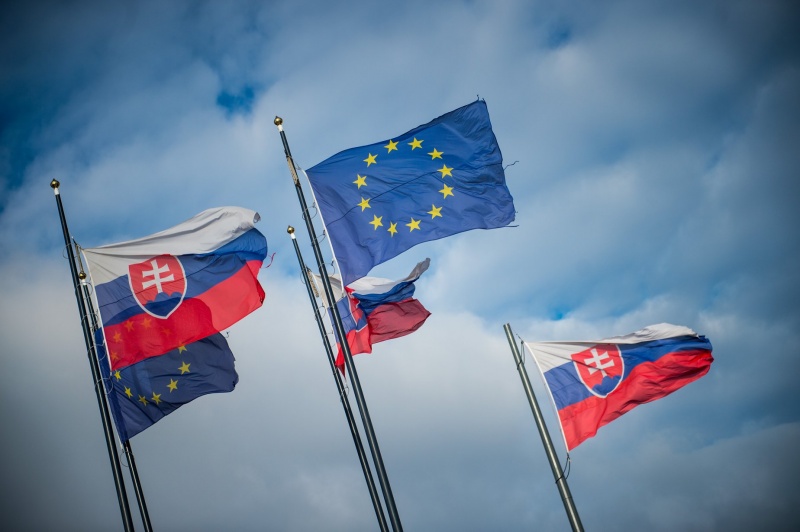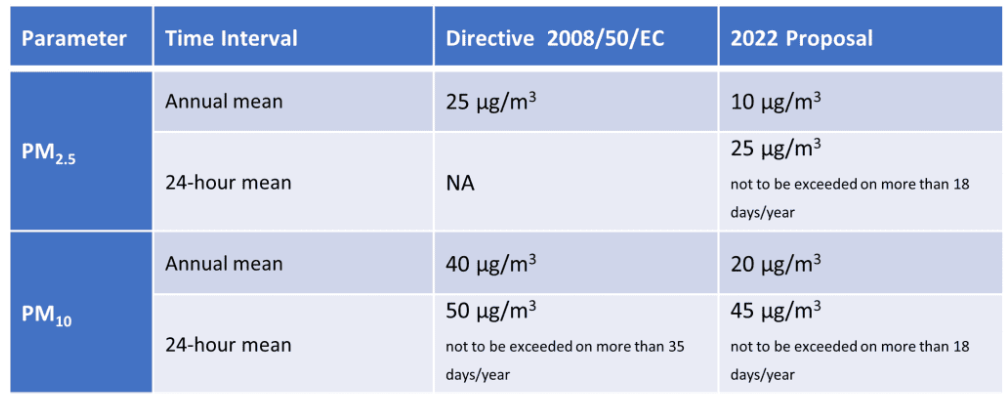
There is no doubt that air pollution negatively affects your health and can trigger some serious illnesses. Legislature protecting you from air pollution is always a compromise. It is based on current medical knowledge but cynically also on its economical aspects or state of society. Who’s going to pay for measures against air pollution? Is there economical benefit in these measures? (By the way, there is a huge economical benefit.) Bet that if people don’t care about air quality, policy makers wouldn’t care about it either. But we are developed nation. We are part of EU. Luckily for our health, at least EU legislature holds for us even if this is not a topic for our self-centered government.
Let’s look at the current EU legislature about air pollution that is in place since 2008. Let’s also add to that what was proposed in 2022 as possible future air quality directive based on the latest WHO guidelines. Here is a quotation from the WHO web page about the latest guidelines from 2022:
WHO regularly integrates scientific evidence on air pollution’s health impacts as well as monitors countries air quality progress. The recommendations included in the WHO Air quality guidelines are based on systematic literature reviews and subsequent rigorous evaluation methods as well as extensive consultation with experts and end-users of the guidelines from all regions of the world.
In the table below, you can see the current 2008 EU directive and the 2022 proposal for PM10 and PM2.5 particles. The EU member states should make sure that the air is less polluted than these thresholds on average.

Maybe you’ve already heard that EU was suing Slovakia for not doing enough to protect health of its citizens against air pollution. It was already ruled that the sue was lawful. Thanks to this, things already moved for better a bit and some useful projects were initiated.
Knowing the current EU directive and the latest WHO guidelines let’s compare these against what we’ve measured in the past year in Divín, Slovakia. In the report below, you can see that Divín is passing the old 2008 directive. Looking at the data in more detail we’ve found out that there were 28 days with PM2.5 exceeding daily average of 25 micrograms per cubic meter. So we are not passing the latest WHO guidelines by huge margin. Breathing such air is dangerous, that’s not only what I am saying, that’s what WHO is saying. I have no false beliefs that we are the worst in Slovakia, there are definitely more polluted places around here but that doesn’t make it any better.

So what can you do for better air quality in your region? First of all talk about it, many people are not concerned about air pollution because they don’t know about its serious medical implications. You should also stick to this good practice. These ones are free or at least cheap. You can also upgrade your high-emission stove for more modern one producing less emissions or even for no-emission one like heat pump. You can also insulate and renovate your house so it would be less energetically demanding. These measures are of course not free, on the contrary they are all rather pricy. But there are grant schemes in Slovakia that can actually help you a lot financially, like this one or this one. The proof that these schemes actually work is that we have applied and won both without having any previous experience with governmental grants.
RELATED POSTS
View all




Leave a Reply